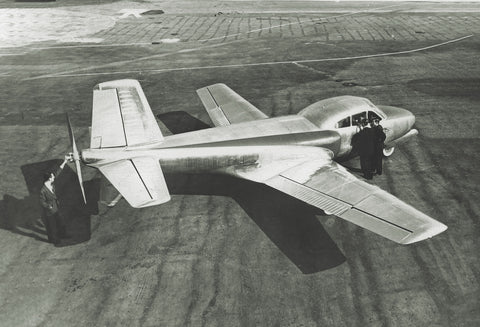
Mystery Ship: Can you identify this eccentric-looking civil airplane?
In July 1920 Donald W. Douglas set out to design the first airplane capable of nonstop coast-to-coast flight. Financed by millionaire David R. Davis, it was a large single-bay wooden biplane powered by a 400-hp Liberty V-12 engine. With a load capacity of 5,000 pounds—the most by any single-engine aircraft at the time—the 3,850-pound craft became the first airplane capable of carrying a payload exceeding its own weight. On February 24, 1921, the Davis-Douglas Cloudster made its maiden flight and on March 19 it set a Pacific Coast altitude record of 19,160 feet. In June it set out on its transcontinental flight, but it only made it one-third of the way before engine failure forced it to land at Fort Bliss, Texas.
Davis lost interest and in 1921 Douglas set out on his own to establish the Douglas Company—and a series of highly successful airplanes, starting with two designs derived from the Cloudster: the DT, a U.S. Navy torpedo bomber, and the Douglas World Cruiser, two of which succeeded in girdling the globe in 1924. Meanwhile, the Cloudster was sold in 1923 and modified with one less fuel tank to accommodate five passengers on sight-seeing flights. T. Claude Ryan of the Ryan Airline Company bought it in 1925 and redesigned it further to carry 10 passengers in an enclosed canopy on regular flights between San Diego and Los Angeles. In December 1926, however, the airplane was wrecked after a forced landing off the coast of Baja, California in Mexico.
The name Cloudster was briefly revived in the 1940s, when the Douglas Aircraft Company developed a medium bomber with two engines in the aft fuselage, powering a pusher propeller. First flying in 1944, the XB-42 “Mixmaster” did not attain production. Thinking ahead of what was shaping up to be a victorious war, Douglas worked on some derivatives: a medium-range airliner designated the DC-8, which never flew, and a light plane for executive or charter use, which reached the prototype stage and was dubbed the Model 1015 Cloudster II.
Aside from its size, the original Cloudster’s wooden airframe was thoroughly conventional for its time. The Cloudster II, in contrast, was an advanced- looking, all-metal monoplane with a straight laminar flow wing and a retractable nose wheel. It had a wingspan of 35 feet, 4 inches, a length of 39 feet, 10 inches and was 12 feet high. Empty weight was 3,200 pounds and gross weight 5,085 lbs. Powered by two 250-hp Continental E250 air-cooled engines inside the rear fuselage, the plane had a maximum speed of 229 mph, a cruising speed of 200 mph, and a rate of climb of 1,500 feet per minute to a service ceiling of 22,200 feet. Its range was 950 miles. A pilot and up to four passengers sat under an enclosed canopy.
The Cloudster II first flew on March 12, 1947. It performed well in most respects and its flaws might have been remedied, but there was little demand from the civil aircraft market and the projected development costs for the airplane had more than doubled. The only Cloudster II ever made flew just one more time before following its namesake to the aviation scrap heap.
